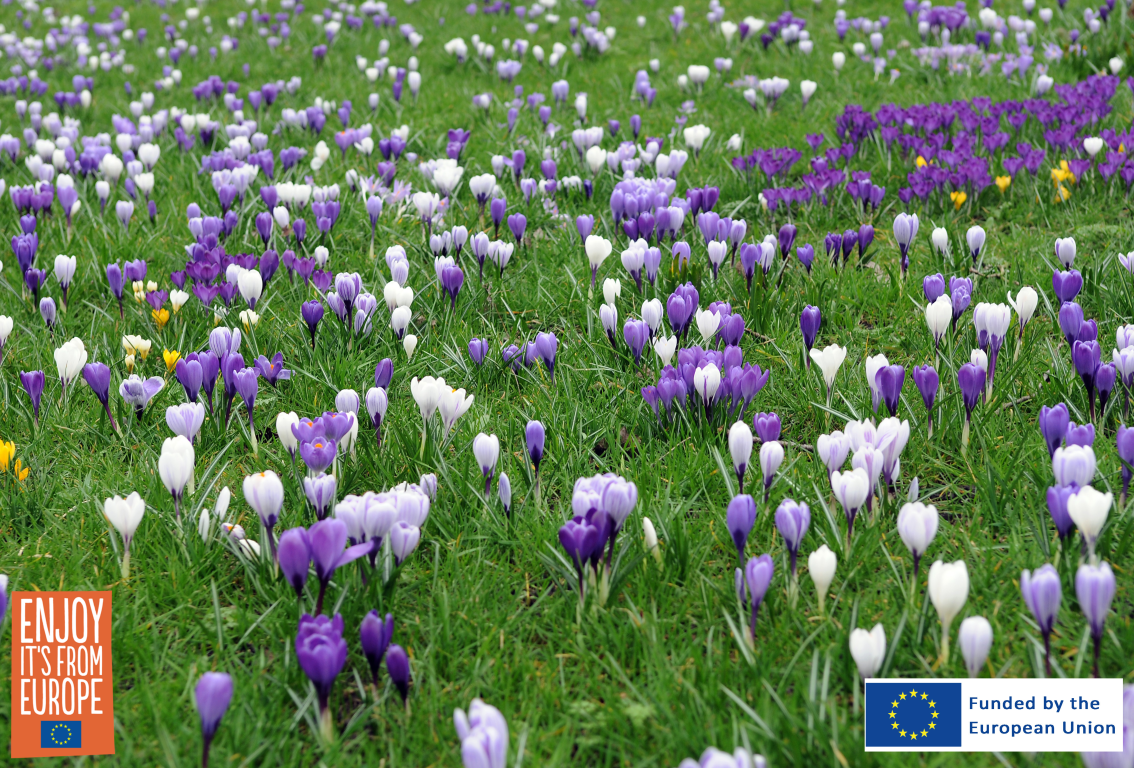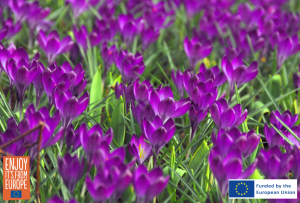Flowerbulb.eu Releases Guide to Extending Your Gardening Season with Crocus Lawns
Why Crocus Lawns Are Perfect for Pollinators and Garden Lovers
PHILADELPHIA, PA, UNITED STATES, September 2, 2025 /EINPresswire.com/ -- Planting a crocus lawn is a delightful way to bring early bursts of color and charm to your garden with minimal effort. As one of the first flowers to bloom in spring, crocuses create a breathtaking, carpet-like display that signals the arrival of warmer days and the end of winter. Once established, crocus lawns are incredibly low-maintenance and will gradually spread and self-seed, offering a refreshing burst of color year after year. These early-blooming flowers provide a crucial food source for pollinators, especially bees, in the early spring when few other plants are in bloom.Similar to a bulb lawn, where various spring bulbs bloom in succession for weeks, a crocus lawn blooms early in the season, and the foliage dies back naturally fairly quickly. This is an advantage for gardeners eager to start mowing their lawns at the usual time in spring. The flowers bloom and fade, allowing the foliage to nourish the bulbs for next year's blooms before mowing begins.
Nearly all crocus varieties—except a handful of fall bloomers—work beautifully for bulb lawns. They naturalize with ease, extending the gardening season by months. In addition to their beauty, crocuses are one of the first food sources for emerging spring bees. Crocus flowers bloom in stunning shades, from rich purples and lavenders to cheerful oranges, yellows, creams, and whites. Whether you plant them in a single color or a mix, both create a gorgeous and vibrant display that will brighten your lawn every spring. Crocus are hardy in Zones 3-8.
Most Often Used in Crocus Lawns
Crocus chrysanthus, or snow crocus, is an early-blooming species known for its small, vibrant yellow, white, and blue flowers. Native to the Balkans and Turkey, it thrives in well-drained soil and full sun. Its delicate blooms emerge in late winter or early spring, often before snow melts.
Crocus vernus, or giant crocus, is a hardy, early-blooming perennial native to Europe. It produces large, vibrant flowers in shades of purple, white, and striped varieties. Thriving in well-drained soil and full sun, it naturalizes easily, making it a popular choice for gardens and lawns.
Crocus tommasinianus, or Tommy (or Tommies) crocus, is an early-flowering species known for its delicate, lilac-purple blooms. Native to Southeastern Europe, it thrives in well-drained soil and naturalizes easily in gardens and lawns. Blooming in late winter to early spring, they are more resistant to pests like squirrels than other crocus species because their corms taste slightly bitter.
Crocus flavus, or yellow crocus, is a perennial flowering plant in the iris family. Native to southeastern Europe and Turkey, it blooms in early spring with bright golden-yellow flowers. This hardy, low-maintenance plant thrives in well-drained soil and is popular for naturalizing in gardens and lawns.
Crocuses are the perfect choice for a hassle-free garden, delivering a vibrant early spring show with minimal upkeep. These charming bulbs thrive in well-drained, fertile soil and need a spot with full sunlight or light shade. Choose a location that gets at least six hours of direct sunlight each day for the best results. While crocuses prefer sandy or loamy soil, they are surprisingly adaptable and can grow in sandy or clay soils if the ground doesn't stay soggy. As with all bulbs, crocuses are not fans of sitting in waterlogged conditions.
The best time to plant crocuses is in the fall, ideally several weeks before the first frost. This gives the bulbs time to establish strong roots before the chill of winter sets in. When planting, dig small holes about 3-4 inches deep, placing the bulbs with their pointed ends facing upward. Space them about 3-4 inches apart for healthy growth and proper air circulation. And if you're planting a large number, a bulb auger attached to a cordless drill will make the job a breeze, allowing you to enjoy the results with even less effort. Learn more here.
Royal Anthos is a Dutch trade organization that represents the trade companies in flower bulbs and nursery stock products worldwide. For more information, visit www.anthos.org.
Flowerbulb.eu is a promotional agency for the flower bulb sector. Their goal is to educate and inspire new and experienced gardeners. They do not sell flower bulbs; they encourage consumers to visit their local retailer. High-resolution images are available royalty-free when citing FlowerBulbs.com as the source. Visit www.flowerbulb.eu for more information.
Garden Media Group ignites buzz for clients, offers innovative public relations campaigns, and secures top media placements and partnerships. The boutique PR and marketing firm is known as the best in the home and garden, horticulture, outdoor living, and lawn and landscape industries. Its annual Garden Trends Report is among the most published trade and consumer news garden studies.
Disclaimer: Funded by the European Union. Views and opinions expressed are however those of the author(s) only and do not necessarily reflect those of the European Union or the European Research Executive Agency (REA). Neither the European Union nor the granting authority can be held responsible for them.
Peggy Anne Montgomery
Garden Media Group
+1 610-444-3040
email us here
Visit us on social media:
Instagram
Facebook
X
Legal Disclaimer:
EIN Presswire provides this news content "as is" without warranty of any kind. We do not accept any responsibility or liability for the accuracy, content, images, videos, licenses, completeness, legality, or reliability of the information contained in this article. If you have any complaints or copyright issues related to this article, kindly contact the author above.





